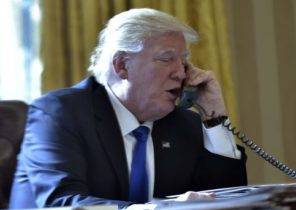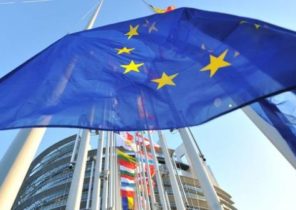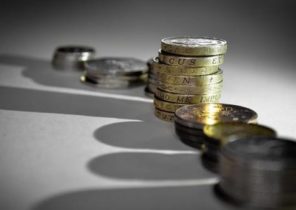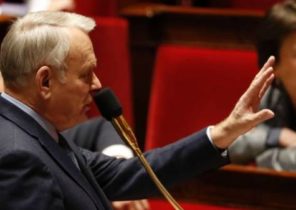
If you climb to the top of the hill and see the countryside, not paying attention to the power pylons and the tractor indeterminate age, wearily traveling on narrow roads, it becomes clear that in the valleys of the North-East of Portugal, little has changed over the last few decades, maybe even centuries.
Gnarled vines of grapes Alvarinho already freed from their heavy fruit, which will now make Vinho Verde, the elderly woman in black leads his sheep through the streets of the village, and the hungry eagles circling over the fields in search of prey.
But if you look further, past grazing herds of sturdy horses, past a forest with pines, oaks and eucalyptus trees and is home to wolves, you will see the symbols of the environmental revolution, sharply defined against the background of the December sky.
130 giant wind turbines that cut the air with rhythmic movements, helped Portugal to do something wonderful. In may, the country was able to survive four and a half day only on renewable energy sources: wind power, sun and water.
Despite concerns about possible disruptions in the supply of electricity, the country lasted for 107 hours, from 6:45 Saturday, may 7, 5:45 next Wednesday.
Francisco Ferreira (Francisco Ferreira), President of the Portuguese non-governmental organization Zero, dealing with issues of environmental protection, learned about what happens when the weekend, he called his friend. “He said, “I look at the graphics and I can say that the last two days we live 100% by electricity generated from renewable sources.” After that, we went over the data, and eventually we counted 107 hours. We confirmed these data in the national grid, whose representatives told us that we lasted four and a half days.”
“It was amazing to see that this system works, to understand that we are able to manage these renewable energy sources, despite the fact that the circumstances were not too favorable”.
Ferreira and his colleagues refer to those few days as proof that renewable energy can completely replace fossil fuels.
Perhaps the success of those four days, partly due to the fact that a significant portion of these 107 hours fell on a weekend, when electricity demand is slightly lower, and also the fact that Mother Nature, apparently, decided to help, since then, continuously, the sun was shining bright and the wind was blowing.
However, supporters of the transition to renewable energy sources insist that in this case, luck played a very minor role. Antonio Sa da Costa (António Sá da Costa), managing Director of the Portuguese Association of renewable energy Apren, asserts that this was the result of years of investment and cooperation.
“In this case came together three factors, without which all this would be impossible, he says. — First, we already had power, which allowed us to benefit from the weather conditions in that period of time. Secondly, this was possible only thanks to the wind, water and sun. Thirdly, we have been operating the potential of the grid — like distribution, and transportation — to act in such a situation”.
Yes, this period of time was very successful, he added. However, this does not detract from the achievements, which could connect to a unified network of hundreds of scattered clean energy plants instead use a much more simple option, namely the energy of fossil fuels.
Or, to put it slightly differently: “When Cristiano Ronaldo scores a goal, people say he was lucky. No. It’s not luck. This is years of training, serious training and many other factors. In our case, luck was not the only factor.”
Sa da Costa noted that the interest of Portugal to the renewable energy emerged in the 1970s, the years when almost all the electricity consumed in the country produced at its hydroelectric power plants.
However, as economic development of Portugal the demand began to exceed supply, forcing her to turn to traditional energy sources. And only at the end of the 20th century, wind farms appeared in Madeira and later in the country. Only then people began to refer to renewable sources of energy more seriously.
Although Portugal was a pioneer in the development of clean energy for more than 10 years in the South Minos was the largest terrestrial wind farm when it opened eight years ago — people have not yet been able to fully curb the geography and climate of their country.
In Portugal wet and dry years follow each other. In wet periods the main source of energy becomes water, followed by wind and coal. In dry years, in the first place is coal, and it is coming wind and water.
According to the Association Apren, in the wet 2016 59% of domestically produced electricity was generated from renewable sources and 41% from fossil fuel. The share of water power accounted for 32% of electricity generated, the share of wind is 25%, while the share of the sun — almost 2%.
Attempts to increase the share of renewable energy sources prevented the economic crisis in Portugal, which scared away investors and slowed growth.
Sa da Costa and Ferreira argue that Portugal needs to make many efforts in order to effectively use thousands of hours of sunlight through the construction of new solar power plants.
“This is a powerful impetus that we need, says Ferreira. In winter, from November to June, the water and the wind, probably, can guarantee the stability of the situation. But from may-June to October-November, we are less likely to rely on wind energy, and to an even lesser extent on the power of water”.
Despite some slowdown, Sa da Costa is quite optimistic about the ability of Portugal to achieve and surpass the targets set by the EU for its members, according to which by 2030 the share of electricity consumption derived from renewable sources must be at least 27%. From his point of view, provided the investment and the corresponding rate of construction of new wind and solar power systems — Portugal will be able to obtain 60% of energy from renewable sources by 2020 and 100% by 2040.
The energy Minister of Portugal Jorge Seguro Sanches (Jorge Seguro Sanches) believes that by 2020 Portugal will be able to 31% of energy consumption from renewable sources. According to him, the government is actively promoting the program to increase the number of solar power plants in the framework of its plans to reduce dependence on oil imports and the creation of a centre for green technologies.
“In the last few years we have seen rapid growth in the number of wind farms, he notes. — However, today the market is focused on obtaining energy from the sun, which is the result of development of high technologies and reducing investment costs. In the near future this will become a new way and ensures reliability of the Portuguese electrical systems”.
In the misty valleys of the Alto Minho wind farm is gradually becoming part of the local landscape. Longhorn Barroso looking at a 80-meter turbine and trying to hide in their shadow in the summer. Hunters pursuing wild boars, hares, and poultry still reach the other side of the hills, but I try to stay at a distance from the engineers involved in the maintenance of the station. Sometimes along with the rotating blades, you notice the wolf.
For Sa da Costa, from which comes the joy of the prophet, watching his predictions come true, those four and a half days in may become the best answer to all sceptics.
“Now no one in their right mind can say that this is impossible. Possible. Because we did it. And if we managed to do the same can make and other countries. Just need to find a way to do it.”







